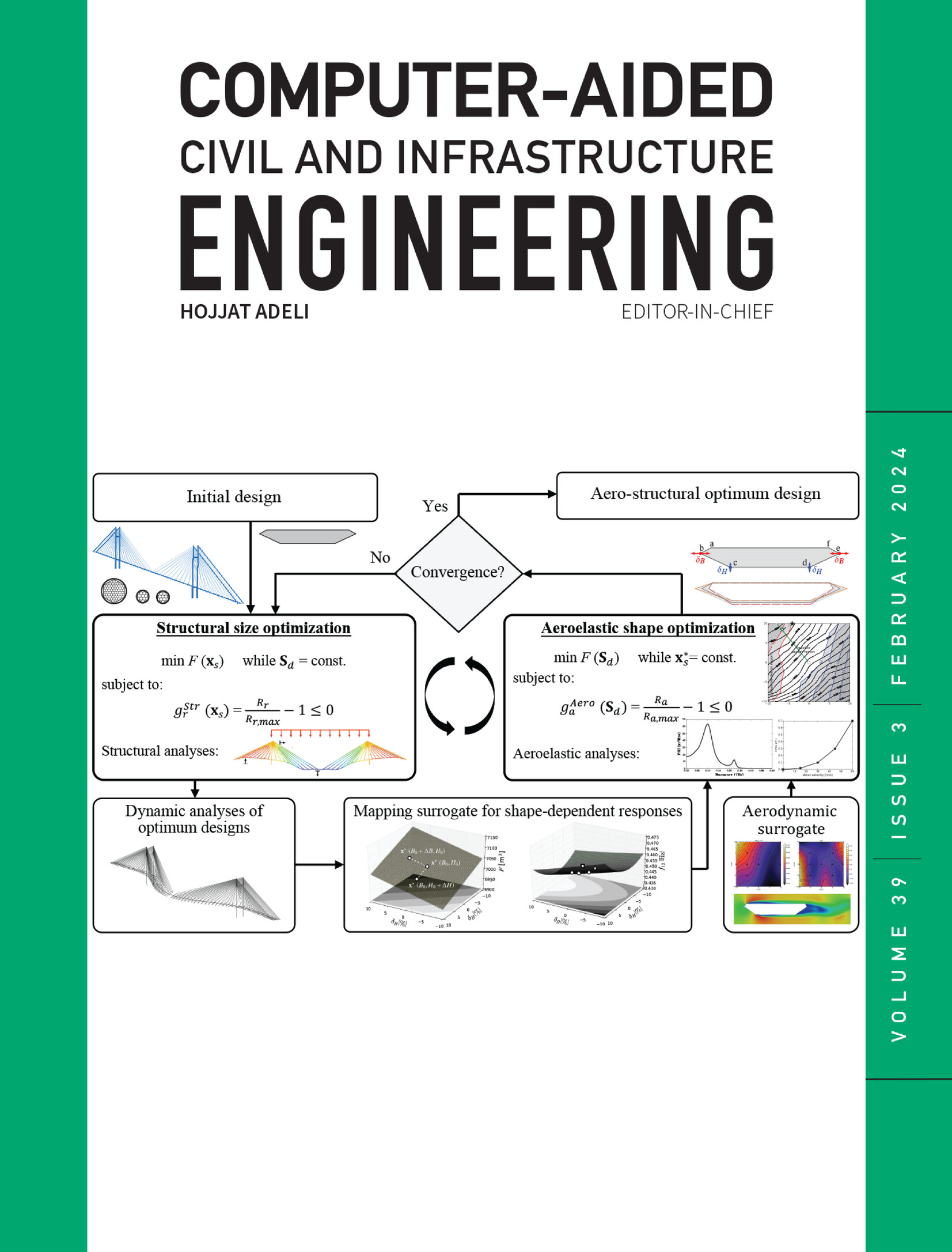使用域自适应生成对抗网络的GPR图像端到端频率增强框架
IF 8.5
1区 工程技术
Q1 COMPUTER SCIENCE, INTERDISCIPLINARY APPLICATIONS
引用次数: 0
摘要
探地雷达(GPR)提供非破坏性的地下成像,但受制于频率和穿透深度之间的权衡:高频在有限的深度下产生更好的分辨率,而低频穿透更深,细节更少。本文介绍了一种利用域自适应生成对抗网络对GPR图像进行频率增强的新方法。提出的端到端框架集成了一个域适应模块(DAM)和一个频率增强模块(FEM),以解决频率分辨率权衡和域差异。DAM对模拟和真实的低频GPR数据进行比对,通过FEM实现有效的频率增强。由于模拟和真实世界GPR数据之间的信号特性存在固有差异,直接将模拟数据训练的模型应用于真实世界场景通常会导致性能下降和物理一致性的丧失,因此域适应对于弥合这一差距至关重要。通过减少域差异和确保特征一致性,该框架生成的高频GPR图像具有更高的清晰度和细节。大量实验表明,该方法显著提高了图像质量、目标检测和定位精度,优于目前最先进的方法,并展示了地下成像应用的强大潜力。本文章由计算机程序翻译,如有差异,请以英文原文为准。
End‐to‐end frequency enhancement framework for GPR images using domain‐adaptive generative adversarial networks
Ground‐penetrating radar (GPR) offers nondestructive subsurface imaging but suffers from a trade‐off between frequency and penetration depth: High frequencies yield better resolution with limited depth, while low frequencies penetrate deeper with reduced detail. This paper introduces a novel frequency enhancement method for GPR images using domain‐adaptive generative adversarial networks. The proposed end‐to‐end framework integrates a Domain Adaptation Module (DAM) and a Frequency Enhancement Module (FEM) to address frequency‐resolution trade‐offs and domain discrepancies. The DAM aligns simulated and real low‐frequency GPR data, enabling effective frequency enhancement by the FEM. Due to inherent differences in signal characteristics between simulated and real‐world GPR data, directly applying models trained on simulated data to real‐world scenarios often results in performance degradation and loss of physical consistency, making domain adaptation essential for bridging this gap. By reducing domain discrepancies and ensuring feature consistency, the framework generates high‐frequency GPR images with enhanced clarity and detail. Extensive experiments show that the method significantly improves image quality, target detection, and localization accuracy, outperforming state‐of‐the‐art approaches and demonstrating strong potential for subsurface imaging applications.
求助全文
通过发布文献求助,成功后即可免费获取论文全文。
去求助
来源期刊
CiteScore
17.60
自引率
19.80%
发文量
146
审稿时长
1 months
期刊介绍:
Computer-Aided Civil and Infrastructure Engineering stands as a scholarly, peer-reviewed archival journal, serving as a vital link between advancements in computer technology and civil and infrastructure engineering. The journal serves as a distinctive platform for the publication of original articles, spotlighting novel computational techniques and inventive applications of computers. Specifically, it concentrates on recent progress in computer and information technologies, fostering the development and application of emerging computing paradigms.
Encompassing a broad scope, the journal addresses bridge, construction, environmental, highway, geotechnical, structural, transportation, and water resources engineering. It extends its reach to the management of infrastructure systems, covering domains such as highways, bridges, pavements, airports, and utilities. The journal delves into areas like artificial intelligence, cognitive modeling, concurrent engineering, database management, distributed computing, evolutionary computing, fuzzy logic, genetic algorithms, geometric modeling, internet-based technologies, knowledge discovery and engineering, machine learning, mobile computing, multimedia technologies, networking, neural network computing, optimization and search, parallel processing, robotics, smart structures, software engineering, virtual reality, and visualization techniques.

 求助内容:
求助内容: 应助结果提醒方式:
应助结果提醒方式:


